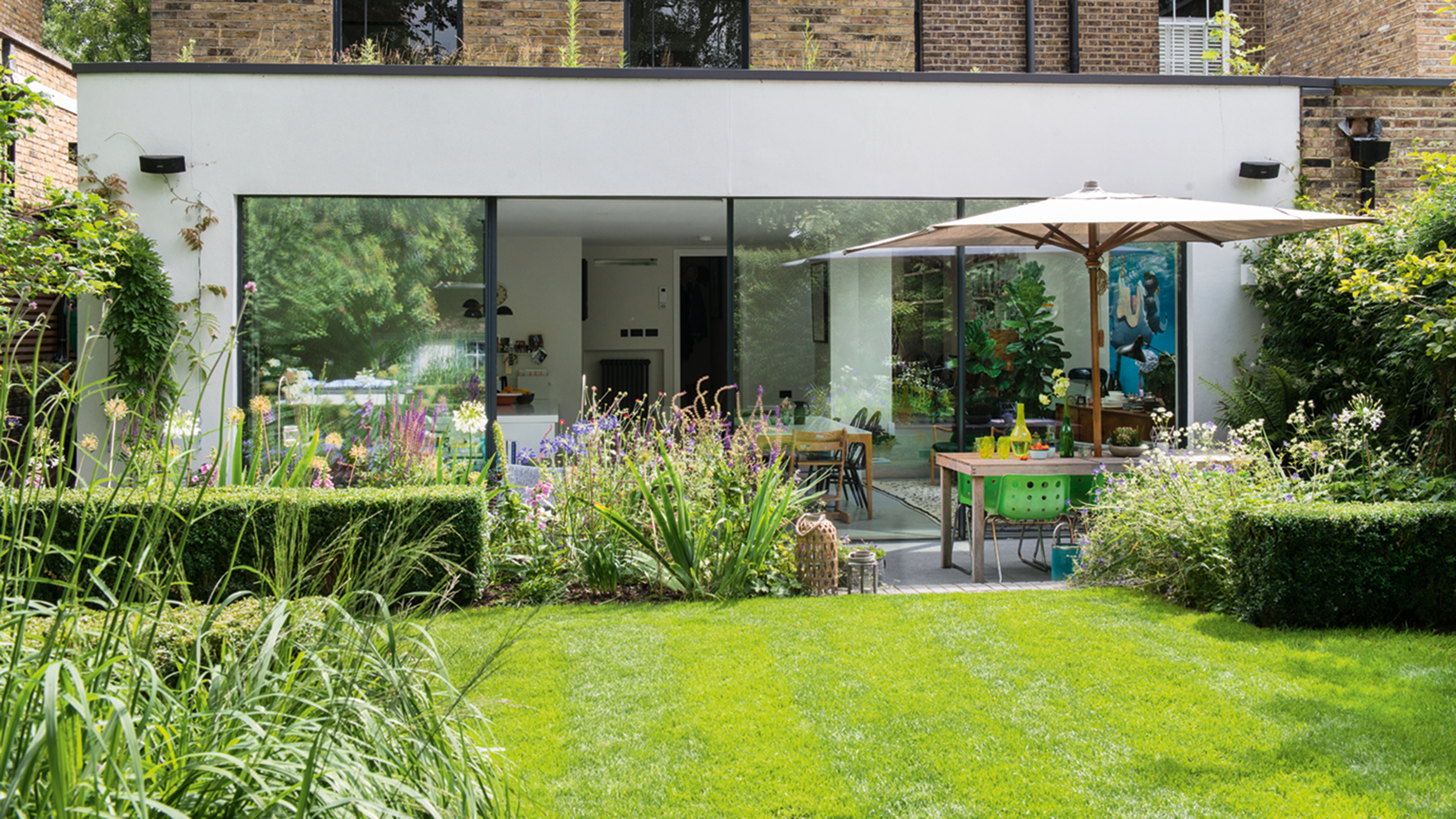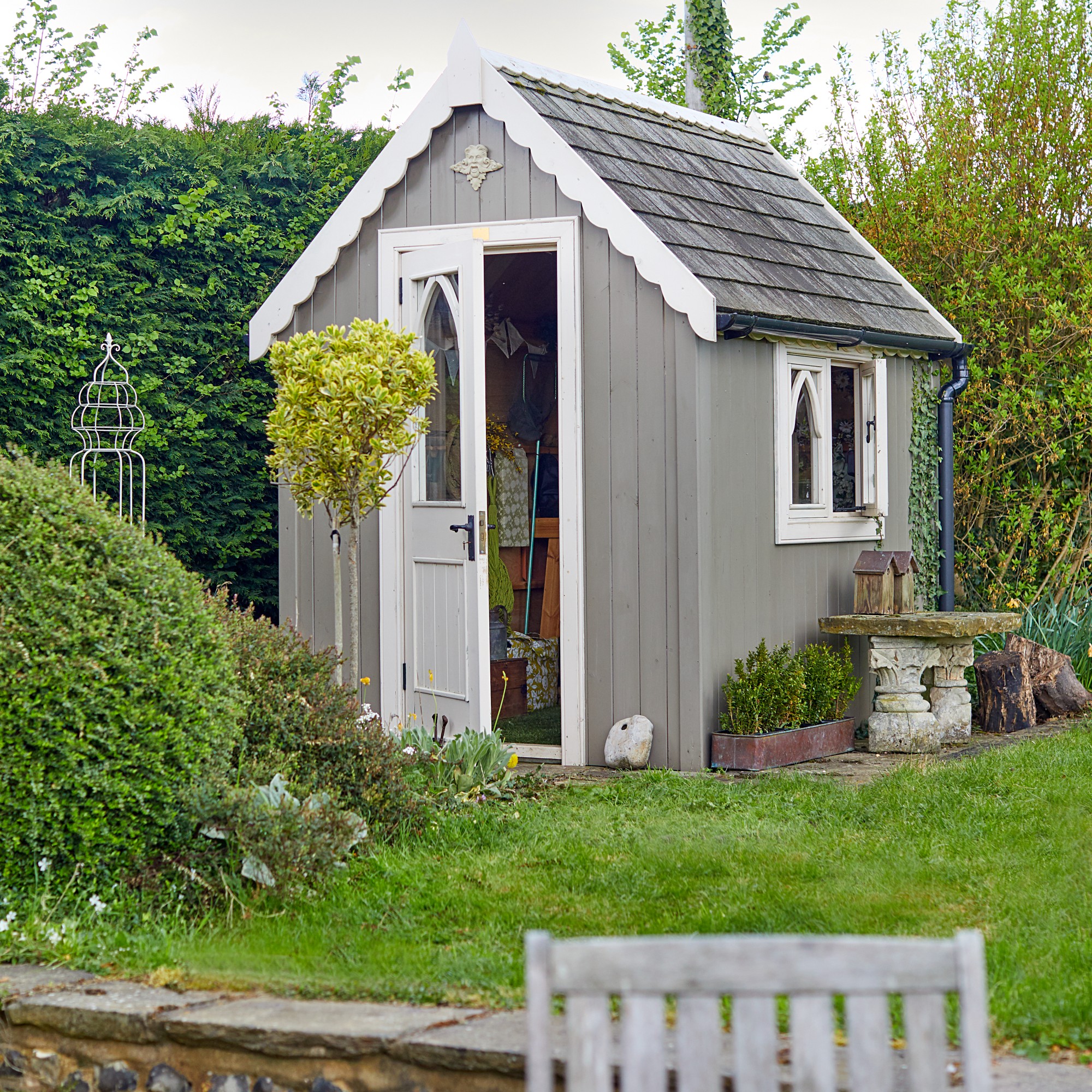Scarifying vs dethatching – what is the difference?
We clear up the mystery around which approach to take with your lawn


Spring is the season are attention often turns to our lawn, neglect after months of cold weather rain. While we're about to enter No-Mow May there are several other things you should be doing for a healthy-looking lawn.
Both scarifying and dethatching are common practices for maintaining a lush lawn but there are pros and cons to each method. If you're not sure which one you should be tackling as part of your lawn care routines we've broken down everything you need to know when it comes to scarifying vs dethatching and how to work out which might work best for you and your lawn.
What are the differences between scarifying and dethatching?

Simply put, scarifying and dethatching are both lawn care practices to remove dead grass, thatch and debris – that could be stopping moisture, oxygen and nutrients from reaching the soil – from your lawn. However, whether you learn how to scarify your lawn or learn how to dethatch your lawn will depend on a few things.
Mark Walsh, Founder of The Lawnologist, breaks it down for us. ‘Dethatching could be compared to giving a lawn a ‘good combing’. Scarifying is a bit more hardcore, aggressive, and deliberate.’
‘Scarifying cuts into the grass and pulls up thatch that has built up, whereas dethatching focuses more on removing the surface layer of debris,’ explains Budget Seeds’ Gardening Expert, Craig Morley. ‘As dethatching only removes the top layer of thatch from the lawn, the process is less aggressive than scarifying and is better for lawns that do not have too much buildup.’
What are the pros and cons of scarifying?
Pros
‘There are a lot of benefits to scarifying, like improving soil aeration, drainage, and nutrient absorption,’ admits Jane Dobbs, Team Lead Gardening at Allan’s Gardeners. ‘Additionally, it encourages grass growth and prevents fungus.’
In addition to this, ‘it will remove a lot of the ‘sponginess’ in lawns, and this means your mower wheels won’t sink, so you get a far better finish when you cut the lawn,’ Mark adds.
Get the Ideal Home Newsletter
Sign up to our newsletter for style and decor inspiration, house makeovers, project advice and more.

Cons of scarifying
One of the biggest negatives of scarifying is that it can leave your lawn looking rather rough, patchy and unattractive, until it starts to recover. This unsightly appearance may be off putting for some but ultimately it will benefit your lawn in the long run.
‘Over scarifying can damage the lawn by tearing up too much of the root system, so be careful not to overdo it,’ warns Abbie Betts, Gardening Buyer at Cherry Lane Garden Centres. This means you’ll need to be mindful as you go about completing this garden task.
What are the pros and cons of dethatching?
Pros of dethatching
Dethatching also helps to deliver water and nutrients to the roots of the grass and reduce the growth of moss and fungi. It’s also ‘less of a shock to the lawn than scarifying,’ suggests PriceYourJob.co.uk’s Gardening expert Harry Bodell.
Plus, the ‘lawn does not look quite as radically different after dethatching,’ as it will after scarifying, Harry continues.

Cons of dethatching
As you’re only removing the top layer when dethatching, this will not penetrate deep enough to aerate the soil. So, if your lawn needs to be aerated you will need to take an additional step to do this.
It is also worth considering that ‘dethatching can be a time-consuming process, especially when using a regular garden rake,’ says Tom Clifford, Director of Gardenstone. You could use a machine or powered tool to speed up the process but these can be quite costly.
FAQs
Which process is best for your lawn?
Deciding whether dethatching or scarifying is best for your lawn will mean working out just how thick the layer of thatch is, as well as what you’re looking to achieve in your garden.
‘If your lawn has quite a thick layer of thatch, scarifying will be better at removing the excess organic matter. However, if there is only a small or moderate amount of thatch, dethatching is the more appropriate option,’ Craig says.
You can determine this either by sight, by feel or by physically measuring the layer. ‘A visual check simply involves looking at the base of the grass blades to see if the soil is visible, if you can’t see the soil then you have a layer of thatch,’ Harry affirms. ‘If the ground beneath your feet is spongy then that’s an indication that there is a thick layer of thatch. Finally, you can dig up a small portion of your lawn turf and measure the depth of the thatch.’

How do you tell when your lawn needs scarifying or dethatching?
If you’ve noticed that your lawn is not growing as well as it did previously or that there are thinning patches of grass or a lot of moss, your lawn may need dethatching or scarifying.
Bare, yellowish or brown patches often indicate a lack of water, sunlight and nutrients at the roots, all of which can cause the grass to struggle. ‘You can measure the thatch of your lawn by pushing your finger into it, and if you can push your finger more than half an inch into the thatch layer, it probably needs to be removed,’ Craig asserts.
When should you scarify or dethatch your lawn?
‘This is quite important as there are two main windows within the year to carry out this type of work: early-mid spring and late summer–mid autumn,’ Mark admits. And if you undertake either outside of these time periods it can cause further damage to your lawn and prohibit it from recovering properly.
‘Scarifying is best done in the autumn while the grass is still growing, the temperature is cooler and there is a good chance of rain. However, it is possible to do it in late spring,’ says Harry. While ‘light dethatching can be done a couple of times throughout the year, as long as the grass has a chance to recover,’ he concludes.

Ellis Cochrane has been a Freelance Contributor for Ideal Home since 2023. Ellis has been writing about homes, interiors and gardens for four years now, with her also contributing to House Beautiful, Country Living, Expert Reviews, Real Homes and Stylist.
-
 Will a conservatory add value to your home and how can you maximise it?
Will a conservatory add value to your home and how can you maximise it?This is what the pros say
By Amy Reeves
-
 I’ve been looking for a new signature scent for my home and The White Company's new fragrance is the exact summer holiday smell I needed
I’ve been looking for a new signature scent for my home and The White Company's new fragrance is the exact summer holiday smell I neededSantorini smells fresh, summery and sophisticated
By Kezia Reynolds
-
 How to remove algae from garden walls in five steps – and the cleaning product experts rave about for tackling it fast
How to remove algae from garden walls in five steps – and the cleaning product experts rave about for tackling it fastExperts share their top tips for getting garden walls algae-free
By Katie Sims